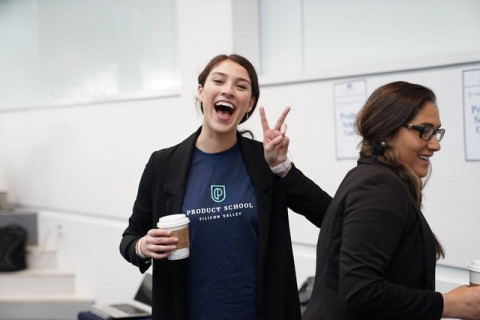
11 min
0
10.04.2022

We all know about great leaders: Steve Jobs, Bill Gates, Elon Musk, etc. But it is essential to remember why, actually, the world calls them leaders. It is because they have incredible people behind them. Let Ayn Rand celebrate the lone-wolf businesses in her books, the reality is different, and great teams define the company's success. Not every car is a Tesla, and not every smartphone is an iPhone, and people who are working on these products surely contribute to their uniqueness.
But what should you do to develop a high-performing team? Where should you look for the right people, and how should you treat them to achieve the necessary results? Whether you're going to build a project manager career, hire people for companies, or even launch your own startup, you should learn more about teams' psychology and the best practices of performance management.
Key Features of High-Performance Teams

What is "the high-performance", and what metrics should you use to define whether your team works efficiently or not? There are some typical characteristics of high-performance teams to understand your direction.
It Has Clear Goals Based on Vision
Imagine the situation when all team members have their personal goals and work for them only. They may grow their careers driven by these ambitions, but this approach has nothing to do with the business vision.
So, you have to develop clear and understandable common goals regardless of the specific roles. Regular workers need to know what their team leader is concerned about and how they can contribute to the mutual benefit.
It would be a good idea to organize meetings where you gather all employees to share the latest news. Speak honestly about victories and defeats, your plans, and strategies. Let your colleagues know that you need their contribution regardless of their positions. People feel more engaged when they know they can affect the mutual result.
Besides, it is essential to ensure that they understand their part of the work as well. Divide the project into small and smart (specific, measurable, attainable, relevant, and time-bound) goals. And don't forget to discuss your priorities which means that employees should be flexible and make quick decisions if necessary. For example, if you're working on an online store website, you should fix purchasing issues before you polish the design.
It Has Defined Roles
Now, when you have developed the team goals, your next step is to define the roles. Until you hire proactive and initiative people, don't expect them to take the lead all the time. You should avoid situations when you have the assignment to complete and nobody is ready to sign up for it. With a list of professional instructions for all roles, everyone knows who is responsible for the work's specific part.
You can compare this approach with the student project that you do together with your peers. You can distribute different roles between 5 people:
- The one who looks for information and check the sources;
- The one who structures this data;
- The one who brainstorms a list of creative ideas;
- The one who is responsible for the writing part;
- The one who proofreads to make the final verdict.
Besides, defined roles help you to establish a certain level of communication. Your employees shouldn't waste their time trying to find someone who will help them when everybody knows everything and nothing about the project. Knowing each other's duties, they'll boost problem-solving skills in the blink of an eye.
It Knows You Appreciate It
Growing an effective team, you should know what drives it the most. It is not about financial compensation only. People love when they are valuable and when their work is noticeable. If they just follow your instructions without understanding what they actually do they bring to the table, the chances are they'll lose the motivation.
That's why team performance management is so challenging — you should find a personal approach to everyone. Even if it goes about the junior position, show your employer that he or she matters. Consider developing a reward system, announce merits at each group meeting, organize one-to-one meetings to share your feedback, etc.
It Hasn't Gaps in Communication
Communication is a king in any kind of relationship. It is impossible to escape all conflict situations and misunderstandings but what you can really do is to communicate your feelings, thoughts, and expectations.
When you're a team leader, one of your primary tasks is to ensure that your employees have available channels to share their opinion. You're also responsible for the overall atmosphere and mutual respect. This topic is especially relevant these days when most people work from home because of the COVID-19 pandemic. Even if you don't meet your colleagues, it doesn't mean you shouldn't stay in touch. What can you do about it?
- create separate chat rooms for different topics: business issues, new suggestions, personal discussions, etc.;
- arrange short meetings on a daily basis to keep update;
- organize corporate events in Zoom;
- implement the convenient task tracker.
Don't undervalue the idea of corporate events in Zoom etc. Open communication affects the organizational culture and helps to achieve better personal and business results. It can also be used when you need to discuss some issues, show your team that you're not satisfied with their work.
It is Constantly Developing
You may hire the best players, but having Ronaldos on your team doesn't guarantee you a crushing store. Sometimes it is better to encourage the individual with less experience but with a strong desire to grow and develop one's skills. Times are changing, the business is changing, and your colleagues can't stay at the same place as well.
What can you do to boost team dynamics? There are several ideas that you can implement in your team culture:
- Organize a corporate library with relevant literature;
- Buy courses for your employees that will help them to boost the knowledge and skills;
- Use team-building events to work better together;
- Define areas of development and create an action plan for each employee;
- Teach by example: tell your colleagues about your insights, read books, etc.
It Consists of Different People
Remember our example with Ronaldo? It works not only at the football field. You may have great individuals on your team, but it doesn't matter so much when they don't complement each other. A forward cannot be a good goalkeeper and vice versa. But it doesn't mean that you should hire forwarders or goalkeepers only; you need both of them.
You need a person who is risk-taking, one who is decision-making, and so on. Researcher R. Meredith Belbin highlights 9 typical team roles depending on the personal features and business focus. The successful team consists of different but bright personalities who are efficient when working together.
High-Performance Team Models That You Can Rely On

Psychologists, hiring managers, and leaders are working for decades trying to develop the models that companies can use to skyrocket team effectiveness. Read on to find more insights on this topic.
Rubin, Plovnick, and Fry's GRPI Model
It is one of the oldest models that was proposed in 1977 to understand how teams work or don't work. GRPI stands for 4 stages:
- Goals: you need to define your expectations and ensure your colleagues understand them in the same way;
- Roles: all team members need to know their responsibilities as well as accept the authority of the leader;
- Processes: it is essential to make decision-making processes and business procedures transparent;
- Interpersonal relationships: team success is impossible with open communication and mutual respect.
If you delve deeper, you can find out that this model was represented as a pyramid diagram that looks similar to Maslow's Hierarchy of Needs. Everything is based on interpersonal relationships since they are decisive when it comes to a productive environment.
The Katzenbach and Smith Model
John Katzenback and Douglas Smith published their "The Wisdom of Teams" book in 1993 after long years of research in different companies. They also created a diagram, but not a pyramid — it is a triangle that represents the outcomes and needs of teams.
Outcomes include:
- Collective work products;
- Business results;
- Personal growth.
Katzenback and Smith believe that there are only 3 components that are required to achieve these goals:
- Commitment: people work efficiently when they know their goals and follow a common vision;
- Skills: it is necessary to maintain technical, soft, and problem-solving skills.
- Accountability: there is mutual and personal accountability that all members of your team should consider.
Look at the illustration to visualize this model and see how these elements interact with each other. Reading "The Wisdom of Teams", you'll find even more insights. For example, the authors offer 5 teams: working group, pseudo-team, potential team, real team, and high-performing team. You can define which one is yours to understand the gaps and areas of growth.
The T7 Model of Team Effectiveness
Michael Lombardo and Robert Eichinger, who are authors of this model, write about 5 internal and 2 external factors that are starting from the letter T and defining the team culture.
Internal factors are:
- Thrust — a mutual goal that drives all team members;
- Trust — a friendly environment where you can rely on your colleagues and boss;
- Talent — a fuel that helps you overcome the challenges;
- Teaming skills — the ability to work with other people;
- Task skills — the ability to execute the tasks in accordance with instructions and deadlines.
Along with these aspects, it is necessary to consider the external ones:
- Team leader fit: managing a group of people, you should consider its needs to find the right approaches.
- Team support: whether it is a startup or a large enterprise, it is responsible for the group's psychological safety that leads to incredible results.
All internal factors are crucial attributes of high performance. However, it can't be said that the external ones are like a cherry on the top. They are rather basic; it is impossible to imagine efficient teamwork without the support of the leader and the company overall.
The Hackman Model
Richard Hackman, the author of "Leading Teams: Setting the Stage for Great Performances" book, presented his model with 5 team effectiveness factors in 2002. He confirmed their validity and effectiveness with the results of studies in U.S. companies.
The Hackman model includes:
- A real team, not a nominal team. A real team includes stable membership, interdependence, and clear boundaries that delineate all members.
- Clear direction and common goals. Your colleagues need transparent team goals that keep them motivated.
- Enabling structure with duties and working instructions. It includes delegating and sharing the responsibility.
- Supportive environment. Performance management has nothing to do with inadequate work conditions, lack of technical tools (especially when WFH), lack of information, and a friendly atmosphere.
- Expert coaching. In most cases, it is not enough to have a team leader who works on the same tasks. Your team may need feedback from the outside, e.g., the independent coach or the corporate psychotherapist who can provide professional assistance.
Wrapping Up
Team management's subtle art is always about challenges and flexibility since you're working not with predictable machines but with a group of people who have real problems, fears, expectations, etc. It is impossible to say which model will work right for you and whether you can implement them to all employers at the same time. So, you should try them all in order to understand your strengths and weaknesses as a team leader and to build your own performance management model!



